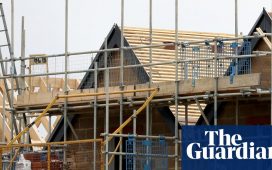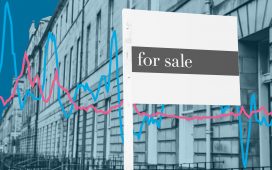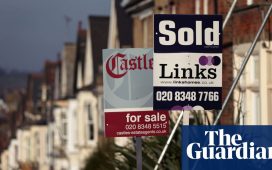Stay informed with free updates
Simply sign up to the UK house prices myFT Digest — delivered directly to your inbox.
House prices in London underperformed the rest of the UK in July, while rents in the capital rose faster than in other regions, according to official data.
The average house price in London fell by an annual rate of 0.4 per cent in July to £521,000, the Office for National Statistics said on Wednesday. This contrasted with a UK-wide 2.2 per cent annual increase to £290,000.
The data underlines the divergence between house prices in the capital and the rest of the country, where house prices rose in July — a trend largely uninterrupted since 2016.
The average cost of a UK home has increased year on year over the five consecutive months to June but in London it fell for four out of those five months. In 2023, the capital showed a sharper fall in house prices than the national average.
In contrast, London private rents rose 9.6 per cent in the 12 months to August, faster than the 8.4 per cent across the UK, according to the ONS.

Economists have blamed low affordability in the capital for weaker house purchase demand and stronger rental prices. In the wake of the Covid-19 pandemic, stronger appetite for larger properties in greener places has also hit the London property market.
Jeremy Leaf, an estate agent and former RICS residential chair, said: “Price growth has been concentrated in the more affordable areas where buyers perceive better value to be available than in places like London.”
The property market has been hit by the rise in mortgage rates, which climbed from a record low in 2021 to a peak in the summer of 2023.
Mortgage rates are coming down as the Bank of England cut interest rates by a quarter basis point to 5 per cent in August for the first time since the onset of the pandemic. However, borrowing costs are still much higher than four years ago.
The BoE is expected to keep interest rates on hold on Thursday but to cut borrowing costs again before the end of the year, which is likely to support house price growth.
With property prices higher in London, both in absolute terms and relative to income than the rest of the country, it was “only natural that any market recovery is likely to trail that of the wider UK”, said Marc von Grundherr, director of the estate agency Benham and Reeves.
He added that homebuyers in the capital faced “a far tougher task with respect to affordability and their ability to climb the ladder”.
Meanwhile, rental demand has risen with fewer people able to afford to buy a property. A low stock of properties, particularly in the capital, has also pushed up the cost of rent.
“The London rental market is red hot and we’re seeing huge tenant demand for what is essentially an inadequate level of supply,” said von Grundherr. “We’re seeing up to 20 to 30 tenants fighting it out for a single property at present.”
Andrew Wishart, economist at the investment bank Berenberg, said that while high borrowing costs were the main driver behind boosted rental demand, a rise in immigration had also fuelled prices in London.
“Rental demand in London is also particularly sensitive to immigration, as new arrivals tend to move to cities initially,” he said.












